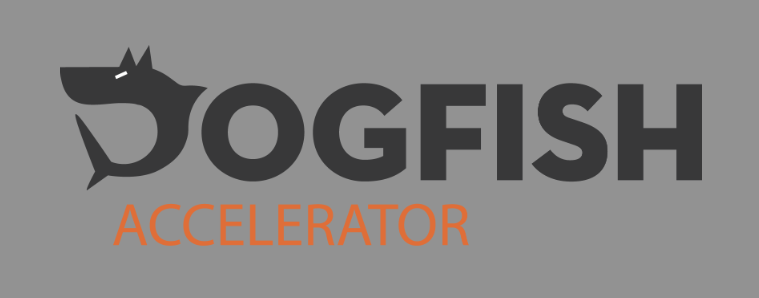 Back to selection
Back to selection
Team-Building, Data Science and the Business Plan: Dogfish Accelerator’s New Film Financing Model

Not long after he founded Dogfish Pictures in 2009, producer James Belfer sensed an industry-wide disconnect between content creation and return on investment. Filmmakers, he gleaned, were concerned with short-term assets, agreeing to sell their film to distributors for a fixed sum that was a mere fraction of the eventual profit. In order to capture the full value of their content, filmmakers would need a new set of marketing tools and a fair bit of elbow grease. Belfer felt that any of these strategies would not be found in the traditional film industry at all, but rather, in the tangential tech-startup community. Between semesters at NYU Stern, Belfer worked for Techstars, a preeminent accelerator that sees seed-stage companies to fruition, and there he became convinced that the tech-funding model was applicable to the world of independent film. “Even though you’re dealing with hardware and technologies,” he says, “the objective is the same. The program is about finding an audience for your product, in the same way you’d determine how to acquire eyes for your film, while maintaining the financial rewards.” And so, Dogfish Accelerator was born.
In a production landscape that so often hinges upon pitching an individual project — a process that often involves the sending of a script — Dogfish Accelerator is far more concerned with the team and business model behind the content. Belfer points to the tech-world notion that ideas are worthless and execution is priceless: “Terrible films make more money than amazing films all the time, and that’s because those terrible films have better business plans.” By investing in a concrete strategy as opposed to, simply, a creative property, Dogfish Accelerator hopes to lessen the role of chance that so often seems to factor into the success of independent films. “We’re looking for people,” says program manager Joanna Bowzer, “who, no matter what content they pick up, can make it work.”
Indeed, when Dogfish Accelerator’s inaugural call for applications opened at the 2013 Sundance Film Festival, only two questions related to content. It wasn’t until applicants had been pared down to the final 16 that Belfer, Bowzer and co-founder Michelle Soffen asked to see scripts. Further, two of the eight teams selected for this year’s program are not so much production companies as programming platforms. Todd Sklar’s Range Life Entertainment tours films at campuses across the country, while Allie Esslinger and Stephanie Testa of Section II are aligning their curatorial prowess to create a “Netflix for lesbians.”
Taking place from September to November, Dogfish Accelerator began this year by pairing filmmaking teams with mentors, who work in everything from entertainment law and publicity to marketing and distribution. Following this period of speed-dating, the teams moved into the building phase, where they are now currently working out of the Dogfish offices about five times a week, refining their models, and consulting the mentors as needed. In November, the process culminates in an investor pitch day, where the teams sell their ideas to a group handpicked by Belfer.
Belfer has also fashioned Dogfish Accelerator around his unique thoughts on data science, which he believes is a key component in the monetization of content. In order for producers to better gauge the commercial viability of potential projects, distribution platforms as well as other filmmakers, it is argued, must practice transparency and be open about their data. But there are problems, not the least of which is producer and investor resistance to “going public” with their financial failures. There’s also the fact that, for many platforms and filmmakers, detailed information about sales is proprietary information with its own valuation. “One of the major reasons why filmmakers and distributors are worried about sharing their numbers is because there’s a certain level of secret sauce that comes with withholding information,” explains Belfer.
Ideally, financial information could be shared with some degree of anonymity, and that sharing would benefit all. However, as Belfer notes, with theatrical box-office results publicly posted at sites like Box Office Mojo, a film’s title in an anonymous database could be discerned by cross-referencing to such data. His proposed solution takes “a one step back and two steps forward approach” as he argues that filmmakers should not report their box-office data. “If you pull your theatrical numbers off of BOM then [platforms and producers] can report all the numbers publicly without revealing what the film is. This is useful because the more data we have the better we can determine how a film can perform prior to it being made. Everything is measurable with data science (even taste, creative elements, and potential for creative execution) but without complete cost and revenue data none of this can be possible or useful.” Such a climate would allow aggregator sites like GoWatchIt, which lays bare the paths of network consumption, to maximize their potential and utility. Belfer, who is a staunch advocate of “direct to fan” platforms, aims to proliferate these transparency practices in his accelerator’s early stages.
Filmmaker spoke with four of this year’s participants about their project beginnings and experiences in Dogfish Accelerator thus far. Information on all of the teams can be found at the program site.
Robert Mockler of Go Infect Films
Filmmaker: Your script Like Me taps into the trend of exploring the nefarious aspects of social networking and Internet celebrity. Where did the idea for the film begin — was it this thematic element, a character, or something entirely different?
Robert Mockler: The main character, Kiya, just sort of found her way into my head. I saw this opportunity to make a film that not only explores our cultural addiction to social media and how young people sometimes measure their self-worth based on the number of “likes” or “followers” they have, but could tap into this overwhelming fear that is deeply rooted in my generation. We are terrified of not being exceptional. We grew up thinking that we had to lead lives that would affect millions, and anything less is somehow a failure. I thought that was a strong starting point for what I hoped would be very engaging material.
Filmmaker: What is your relationship to social media? It can definitely function as an aid in attracting audiences, but as filmmakers and entrepreneurs, do you recognize its drawbacks?
Mockler: I’m very optimistic about how social media is helping to democratize filmmaking and empower independents. After all, Dogfish Pictures picked up our film because of Twitter. I tweeted James Belfer the logline of our film and the link to our concept trailer, and a few days later, we were sitting in a coffee shop in Manhattan. I’m a college dropout with no industry connections. I wouldn’t have had this opportunity if it weren’t for social media. So, everyone should just drop out of film school and tweet James Belfer…Seriously though, social media is a fascinating tool with endless potential. That said, I certainly recognize its drawbacks. Social media has given everyone a voice and platform, but the sheer volume of output and noise is overwhelming. I think the key thing is we need to learn how to communicate more effectively, and ultimately I believe good content will find its way to the surface.
David Mandel of Young Gunner Films
Filmmaker: You’ve adopted the start-up “Build, Measure, and Learn” approach for production. What’s that about?
David Mandel: The build, measure, and learn approach — adopted from Eric Ries’ The Lean Startup — is key to creating a sustainable company and successful slate of films. Our goal is to start building a “tribe” — the people who will stick with us across titles and genres — as early as possible for each project. Our approach is to engage audiences early with “Minimum Viable Products,” called “MVPS” by Ries in his book. It’s best to think of these like marketing materials — teasers, posters, loglines, and concept reels; we create simple, cheap versions of these to learn who our primary audience is, where they are most likely to view our content, and how we can best reach them. The data and metrics we gain from doing this early and often becomes the cornerstone of our marketing plan and will be invaluable in our production and distribution plans as well.
The marketing approach to film distribution and release is too often ignored by producers or put off until too late. A lot of filmmakers don’t have a plan beyond hoping they play at a major festival, selling to a major distributor, and letting them handle the rest. I’ve seen way too many film business plans based entirely on that outcome, and it’s pathetic. We’re really serious about getting as much data about our films’ value as possible as we move from production to distribution. So many great films are the victims of poor distribution, or are lost in aggregation — our aim is to avoid that at all costs. The tools filmmakers have today to learn about their audiences and deliver content to them are just incredible.
Filmmaker: What is it about your project slate that lends itself to your startup framework?
Mandel: Our initial slate is to make three director-driven genre features, each for under $500K. Genre titles on average perform better internationally than comedies or dramas. Since we’re building our company essentially from scratch, we want our first projects to have as much an opportunity to succeed internationally as they do domestically
Frankly, there’s a lot of market opportunity for intelligent, ambitious films that break the mold of “genre” while still satisfying those core audiences. Taking an elevated and director-driven approach to our films and doing them modestly means we can make the kinds of movies we love on our terms and stand a really great chance of succeeding artistically as well as financially. We all have significant experience producing films at the micro- and low-budget level and have had success doing so. We want to replicate that and grow.
Filmmaker: What’s the relation of content to outreach?
Mandel: There’s been a real watershed in the independent film world over the past few years. Thanks to crowdfunding, audiences have gotten used to putting money into a team with a promising idea and an incomplete project. Yes, people complain that the current marketplace is both crowded and competitive. Success will always depend on the quality of your content, but now it’s also heavily influenced by winning your audience early and giving them the tools to spread the word.
As filmmakers, one of the hardest things we wrestle with is being precious about our film. It’s something that the Lean Startup mentality really forces us to face: can you put an incomplete piece of material out there and win over complete strangers? A lot of filmmakers are already doing it on sites like Kickstarter, Indiegogo and Seed&Spark.
Every filmmaker needs to figure out early outreach and sharing content with their audiences to stand out. The big secret is always going to be creating the right pieces of content that can be used organically within the film and to share with people early on. But filmmakers are creative and should embrace the opportunity to create more stuff. If you’re making the kinds of films that you’d want to see, you should have no trouble coming up with the kind of content you’d want your idols to send you.
Todd Sklar of Range Life Entertainment
Filmmaker: How did the self-release of your debut film, Box Elder, spur the creation of Range Life?
Todd Sklar: I think ultimately it was, like most things, a marriage of timing and circumstance. The distribution landscape had just blown up. We had had some success with building a large audience for a small film. We were all in our early 20s and didn’t mind the insane amounts of work that were matched by the insane amounts of fun each week. Plus that first tour was a real “burn the ships” situation — we didn’t have anywhere or anything to return to — so staying on the road and growing the platform really made sense.
Filmmaker: Nowadays, with all the technological channels available for audience outreach, the concept of touring films is a bit of an anomaly. Is there something this physical, hands-on model still has against the Internet?
Sklar: I think an art form like film, which is rooted in storytelling and the human condition, will always rely on an experiential component for its release. Seeing a movie with a group of people and then engaging with them about it afterwards is irreplaceable, and the more we try to digitize the process, of getting films to audiences, the more we make our field and medium unimportant and unnecessary.
Filmmaker: How is Dogfish Accelerator influencing Range Life’s mission? Are you working to expand or adapt in new ways within this startup framework?
Sklar: The accelerator is lifesaver for us in a lot of ways. We were down to just my business partner Maury [Steinman] doing standalone events the past two to three years while I was making Awful Nice and working on a TV project, and we needed to scale back up, but also start fresh in some places, to remedy problems that we ran into before my hiatus. Which, to make a long story short, means that we’re (re)building this thing so that it grows more as a platform rather than a model. In the past, we catered everything towards creating the best release model for the films, and then that evolved into creating the best marketing campaign within our touring model. Ultimately though, the entire impetus for why we started this thing was to connect with audiences in a meaningful way, and we kept running into situations where a film’s release plan would get in the way of successfully doing that. As a result, we’ve decided to pivot our focus back to audience, and we’re rebuilding internally so that the touring apparatus functions more as a platform for engaging and maintaining our audiences. We’re shifting towards becoming more of an iTunes for campus events, rather than continuing to grow as a touring film festival.
Andrew Hauser of Wheelhouse Pictures
Filmmaker: With a slate of four films that you see from development through post, how do you juggle your workload?
Andrew Hauser: With prioritizing workload, it really depends on a week-to-week basis. With the four projects on our slate, we both have very separate roles on each of them, with [partner] Jessica [Caldwell] producing Penny Dreadful and Jeremy Teicher’s movie, me producing My First Kiss and both of us producing AWOL. On top of that, we both have to take extra film work on in order to pay the bills. The timeline for each of the four movies are completely different, so the priorities change depending on where development of the movie is at any one point. The important part is to never try and neglect anything, and to communicate to your directors and other producers what else you have going on, so everyone is understanding. All our films are low budget, so it’s understood that we have to be working on other things.
Filmmaker: What is it about your approach that you feel defines you apart from other producers of your ilk?
Hauser: In terms of what defines as different from our peers, we think it’s just a case of have a strong belief in your own taste, and a strong sense of what a director is capable of. Three of our four films are $200,000 budgets and under, so we’re not talking about a huge amount of money. You have to have a belief that the material and the talent involved is strong enough that together you can pull off something special, that won’t get lost in the crowd.
Filmmaker: Has the tech startup framework that Dogfish promotes influenced your process, or altered it even?
Hauser: As everyone knows, independent film is in a real state of flux right now. The days of making a film, taking it to a decent festival, and then making a decent sale are over. Dogfish is really changing our focus to think about the entire structure from the beginning, taking into account potential audience up front, and thinking about strategies of distribution a lot earlier. We’re being constantly asked to think about our potential audience, what size we believe it can be, and how we can maximize them earlier in the entire process, whether through building up audience awareness early to show to investors, or trying to make deals with domestic distributors a lot earlier in the process than would be usual for films of this size.




